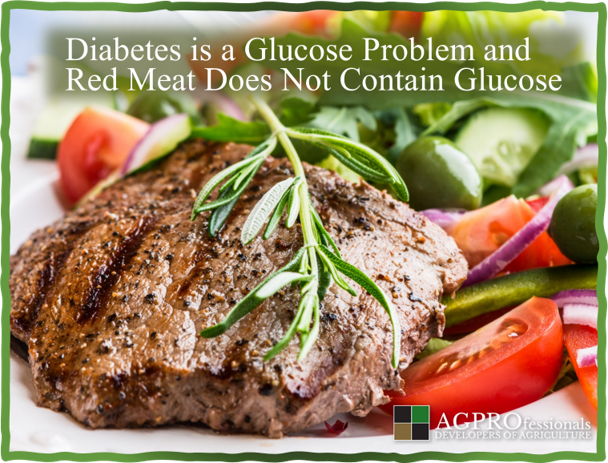
Diabetes, Glucose, and the Red Meat Debate
Harvard University’s T.H. Chan School of Public Health recently published a study titled Red meat intake and risk of type 2 diabetes in a prospective cohort study of United States females and males (2023). Its conclusion might sound familiar: limit red meat consumption and focus on alternative proteins for preventing type 2 diabetes.
That message, however, deserves closer inspection. Diabetes is fundamentally a disease where the human body is unable to manage glucose, and red meat does not contain glucose. By contrast, the foods that often accompany red meat — buns, rolls, fries, and soda — are rich in glucose and directly impact blood sugar levels. This key distinction is often overlooked in public discussion.
Why Epidemiology Has Limits
The Harvard study is epidemiological in nature, meaning it looked at population patterns rather than testing interventions directly. Epidemiology can provide useful insights, but it has a poor track record of predicting outcomes when tested in clinical trials — with accuracy rates as low as 0–20%.
As author Nobbs (2021) notes, observational nutrition studies often generate headlines but not definitive answers. They show correlation, not causation, yet they form the backbone of nutrition policy and mainstream dietary guidelines.
A Closer Look at the Harvard Findings
Nutritionist Dr. Zoë Harcombe reviewed the Harvard study and identified multiple concerns, including:
- Reliance on food frequency questionnaires which are notoriously unreliable.
- Risk inflation through statistical calibration.
- Questionable definitions of “red meat” (including lasagna and sandwiches).
- Implausible claims, such as women consuming more red meat than men.
- Contradictory results, where “total red meat” supposedly carried a higher risk than its processed or unprocessed parts.
- Overlooked confounding factors such as BMI, smoking, and exercise habits.
- Relative risk percentages that sound dramatic in headlines but translate into negligible absolute risk differences.
Her conclusion: the problems attributed to the “burger” are far more plausibly linked to the “bun, fries, and soda” that were ignored in the analysis.
The Case for Meat
Despite recurring negative headlines, support for meat as part of a healthy diet is growing among experts. Beef Central reported that leading scientists from Australia, the U.S., and Europe found no high-quality evidence to justify the “simplistic and reductionist” attacks on meat.
In October 2022, more than 200 scientists gathered in Dublin, Ireland, for the International Summit on the Societal Role of Meat. Their discussions culminated in The Dublin Declaration of Scientists on the Societal Role of Livestock, a statement affirming the essential role of meat and livestock in human health, nutrition, and society at large.
Conclusion: Looking Past the Headlines
The Harvard study is only the latest in a long line of epidemiological papers drawing tenuous links between red meat and chronic disease. Its weaknesses highlight a larger issue: policy and perception are too often shaped by correlations that ignore context, confounding factors, and basic nutritional science.
When it comes to diabetes, the evidence is clear — glucose is the problem, and red meat does not contain glucose. What is often blamed on meat may in fact be the result of the starchy, sugary foods that come with it.
For the health of consumers and the future of agriculture, it is critical to respond to misleading claims with sound science. The story of red meat is not one of harm, but of nourishment, sustainability, and an irreplaceable role in the human diet.
LINKS AND ADDITIONAL INFORMATION:
Meat is Essential article by Protect The Harvest HERE
National Library of Medicine - "Contradictions in Highly Quoted Studies" HERE
National Library of Medicine - "The Scandal of Poor Epidemiological Research" HERE
Data and Observational Studies - A Process Out of Control HERE
